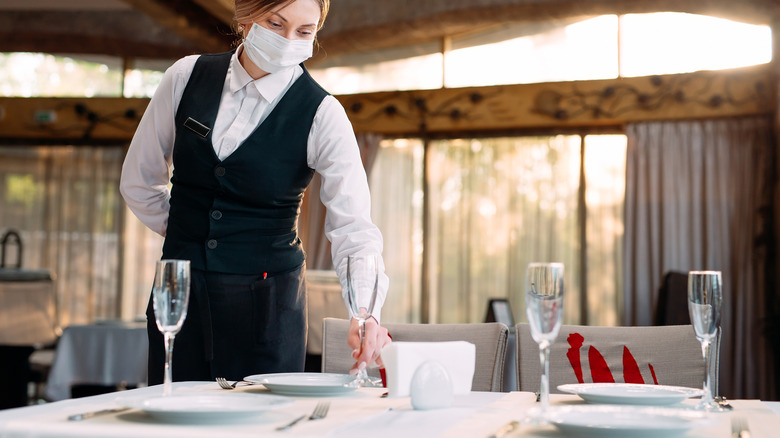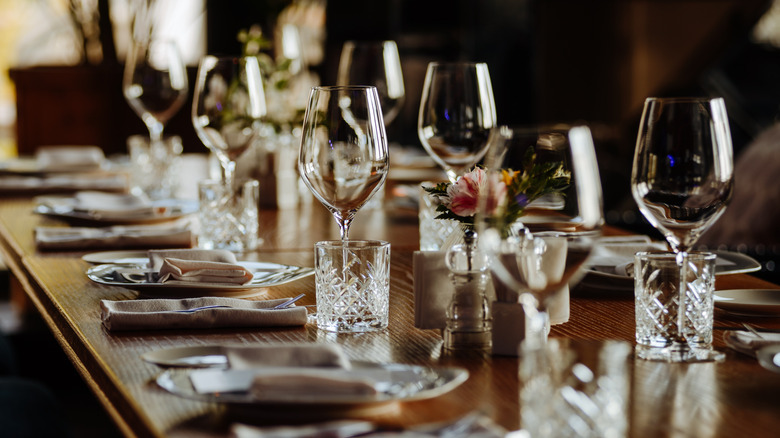The Big Difference Between American And European Dining Etiquette
When you need to impress, nothing makes you stand out at a dinner party like knowing proper table etiquette. According to the Richmond Times-Dispatch, our table manners date back to ancient Greece. While we might not always rise from our seats to greet guests at dinner, our use of cutlery hasn't changed radically in the past few centuries. Once table knives entered the picture in 16th century France, manners centered around cutlery started to evolve. By the time curved forks entered the dining picture in the 18th century, all bets were off and you had to master proper usage of forks and knives in polite society.
While proper dining etiquette seems straightforward, continental Europe held on to traditions that the U.S. lost, and vice versa. According to The Protocol School of Texas, we can primarily differentiate American and European dining customs through how we interact with our silverware. In America, you would indicate to your host that you have completed your meal by placing your fork with tines up and knife parallel and together, pointed towards the 11 o'clock position on your plate. If you found yourself in between courses or bites, you would place your fork with tines up and knife parallel in a similar orientation, but with greater space in between the two. Europe uses different positions to indicate dining status.
A European tradition of politeness
According to The Protocol School of Texas, you would indicate to your European host that you have finished eating by placing your fork and knife close together and parallel with each other towards the center of the plate, pointed at the 11 o'clock position. To show a European host you still plan to eat more, you would cross your knife and fork on the plate. Variations on the resting position pop up across Europe. According to French Today, you wouldn't want to cross your silverware to show you need more time to eat if you found yourself in France. Instead, you would form a wide V-shape on your plate with your knife and fork. You would also want to make sure the tines of your fork face down on your plate.
Knowing the in's and out's of proper table etiquette can make strong first impressions. If you find yourself in a scenario that requires knowing how to properly show respect to your host, make sure you follow the right cutlery manners for the situation. If you use American customs in Europe, you might face some uncomfortable scenarios and miss out on some great food by signalling incorrectly to your host. Stay vigilant and you won't have a problem enjoying fine dining in any country.

